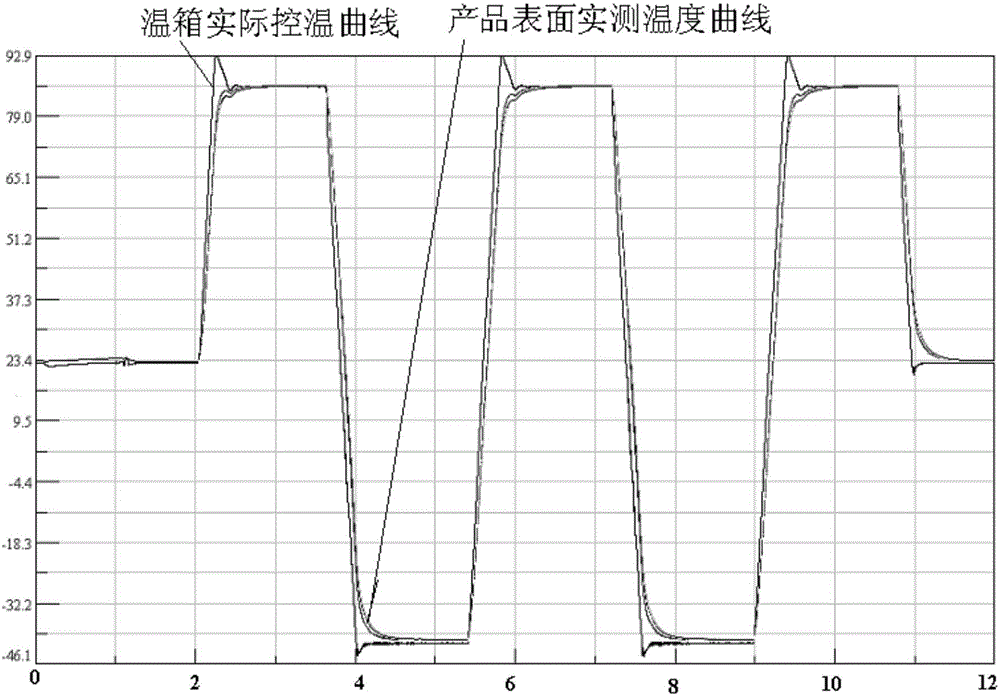Method for resisting frosting and condensation in rapid temperature change experiment
A temperature change and anti-frost technology, applied in the directions of temperature control, strength characteristics, and measurement of electrical variables, to achieve the effects of avoiding rework, ensuring work efficiency, and improving economic benefits
- Summary
- Abstract
- Description
- Claims
- Application Information
AI Technical Summary
Problems solved by technology
Method used
Image
Examples
Embodiment
[0047] Determine the test piece
[0048] The test piece is a stand-alone product of a certain model, the product material is aluminum, and the actual weight is 1.57kg. During the test, 4 temperature measuring points T1~T4 are evenly arranged on the outer surface of the product;
[0049] Implementation steps
[0050] 1) The weighing result of the product is 1.57kg;
[0051] 2) The outer surface area of the product measured by CAD software is 736.8cm 2 ;
[0052] 3) According to the mass and area data, the product S / M value can be calculated as 469.3cm 2 / kg;
[0053] 4) According to the S / M value, determine the no-load temperature change rate of the thermostat as 5°C / min;
[0054] 5) The incubator selected for the test is the German Fuqi incubator (VTS7027-15);
[0055] 6) Compile the thermostat control program, the main parameters of which are as follows:
[0056] The no-load temperature change rate is 5°C / min;
[0057] Test temperature range -40℃~+85℃;
[0058] The...
PUM
 Login to View More
Login to View More Abstract
Description
Claims
Application Information
 Login to View More
Login to View More - R&D Engineer
- R&D Manager
- IP Professional
- Industry Leading Data Capabilities
- Powerful AI technology
- Patent DNA Extraction
Browse by: Latest US Patents, China's latest patents, Technical Efficacy Thesaurus, Application Domain, Technology Topic, Popular Technical Reports.
© 2024 PatSnap. All rights reserved.Legal|Privacy policy|Modern Slavery Act Transparency Statement|Sitemap|About US| Contact US: help@patsnap.com








